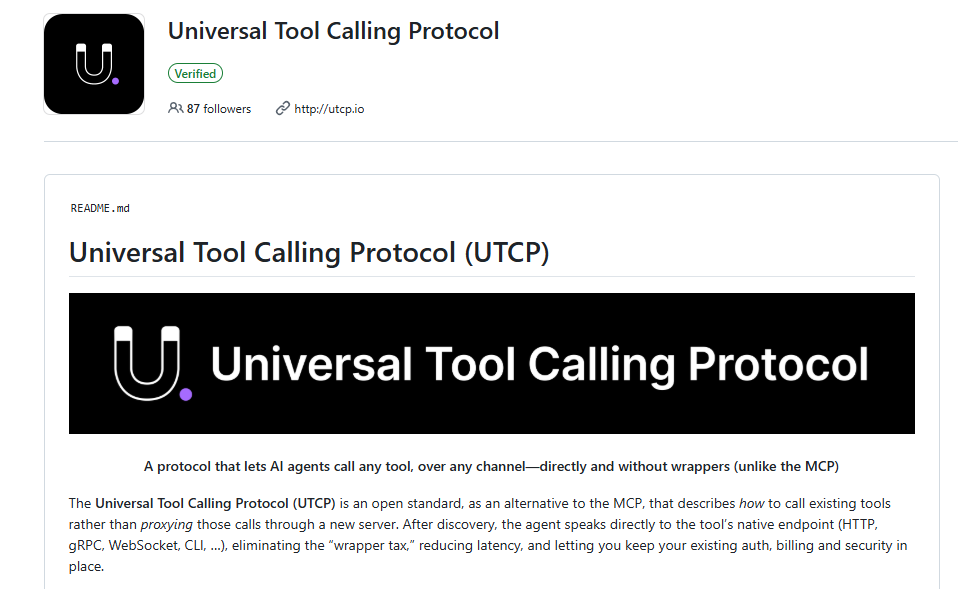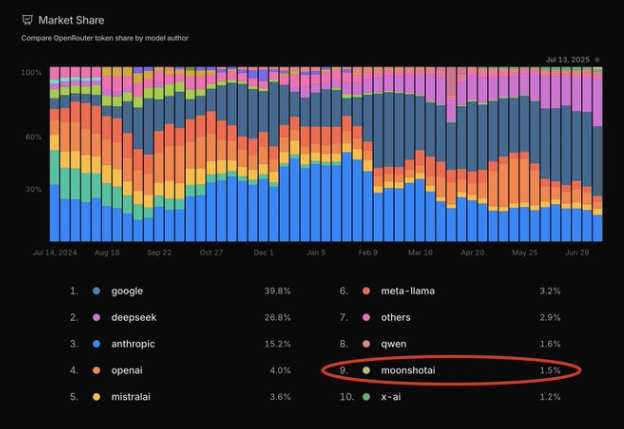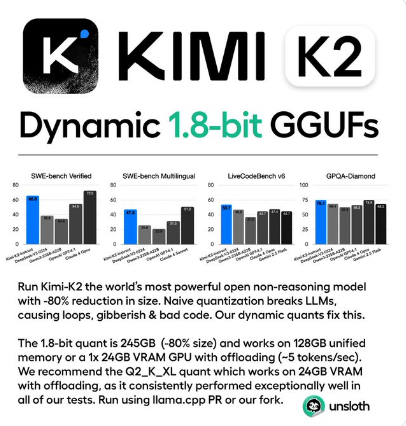With the rapid development of AI technology, tool calling protocols have become a critical bridge connecting AI agents with external services. Recently, the Universal Tool Calling Protocol (UTCP) has sparked industry discussions and is seen as a powerful alternative to the Model Context Protocol (MCP). UTCP eliminates the "wrapper tax" by directly connecting to the native endpoints of tools, significantly reducing latency while preserving existing authentication and security mechanisms. The AIbase editorial team has compiled the latest social media updates and conducted an in-depth analysis of UTCP's innovations and its potential impact on the AI ecosystem.

Introduction to UTCP: Direct Connection, Say Goodbye to the Middle Layer
UTCP is an open-source protocol designed to provide AI agents with a flexible and scalable way to call tools. Unlike MCP, which abstracts the complexity of tools through a proxy gateway, UTCP directly defines the functions and calling methods of tools using a simple JSON description file, known as the "UTCP manual." After service discovery, AI agents can communicate directly with the native endpoints of tools (such as HTTP, gRPC, WebSocket, CLI, etc.), eliminating the need for complex intermediate servers. This design not only reduces latency but also preserves the original authentication, billing, and security settings of the tools, greatly improving development efficiency and system compatibility.
Core Advantages of UTCP: Flexibility and Efficiency Coexist
The design philosophy of UTCP is "describe rather than proxy," and its core advantages include:
- No Wrapper Tax: There is no need to develop additional proxy servers for each tool. Just provide a JSON definition to call existing APIs or services, simplifying the development process.
- Broad Protocol Support: Supports multiple communication protocols including HTTP, WebSocket, gRPC, GraphQL, TCP, UDP, and WebRTC, and can even seamlessly integrate with existing MCP services.
- OpenAPI Specification Compatibility: UTCP supports automatic conversion of OpenAPI specifications, making it easy for developers to quickly integrate existing APIs into AI agents.
- Low Latency and High Scalability: By communicating directly, UTCP avoids performance losses caused by the proxy layer, making it suitable for large-scale tool integration scenarios.
Limitations of MCP and Improvements by UTCP
MCP, an open-source protocol introduced by Anthropic at the end of 2024, provides a standardized interaction method between large language models (LLMs) and external tools through a client-server architecture. However, social media discussions point out that MCP's "over-wrapping" issue increases development complexity and may cause additional performance overhead due to the proxy layer. In contrast, UTCP greatly simplifies the integration process by directly calling the native endpoints of tools. Additionally, UTCP supports local CLI tools and P2P communication (such as WebRTC), further expanding its application scenarios.
For example, when connecting to a database, MCP requires a proxy layer, while UTCP organizes the database connection into a standard format for direct access by AI agents. This approach not only lowers the development barrier but also allows enterprises to fully utilize their existing infrastructure without additional adjustments to authentication or security mechanisms.
Social Media Discussions: Development-Friendly Nature of UTCP
On social media, developers' evaluations of UTCP focus on its simplicity and flexibility. One developer mentioned that UTCP uses JSON to describe tool functions, eliminating the cumbersome configuration of intermediate servers, especially suitable for teams looking to quickly integrate existing APIs. In comparison, some developers find the tool calling process of MCP "complex and not intuitive," especially when frequent adjustments to tool definitions are required.
Market Potential and Future Outlook of UTCP
The launch of UTCP marks a step forward for AI tool calling protocols toward greater efficiency and flexibility. Its "zero-wrapper" design concept aligns with the needs of the AI era for low latency and high compatibility, showing great potential, especially in enterprise applications and complex workflow scenarios. Although UTCP is still in its early stages of development, some developers point out that its security measures rely on the tool's own configuration, and future improvements may require more standardized security mechanisms. AIbase believes that as the UTCP community grows and the protocol is further optimized, it has the potential to become the mainstream standard for interactions between AI agents and tools, helping to build a more open and efficient AI ecosystem.






